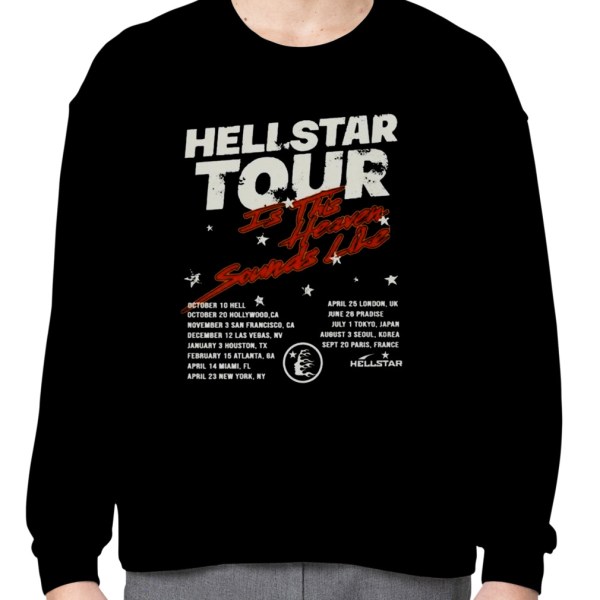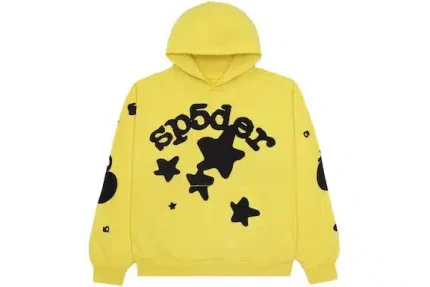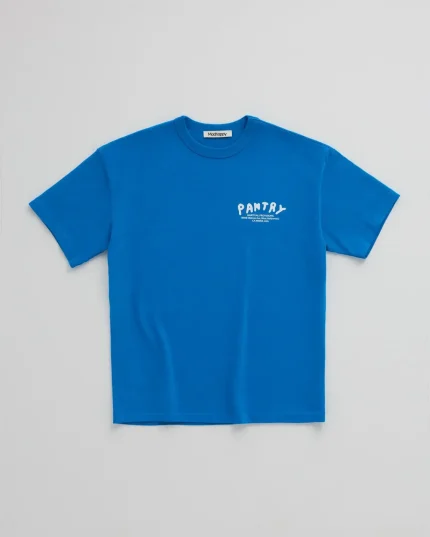Hellstar Clothing has emerged as synonymous with rebellion, individuality, and street fashion in recent years. With its bold designs, unapologetic aesthetic, and growing cult following, Hellstar has positioned itself as a key player in the streetwear scene. What sets the brand apart is its ability to combine counter-culture elements with fashion-forward designs, making it popular among those who value both style and self-expression.
This article will explore the rise of Hellstar Clothing, the elements that define its aesthetic, and its impact on streetwear culture.
The Origins of Hellstar Clothing
From Underground Roots to Global Streetwear Icon
Hellstar Clothing began as an underground label, quietly gaining attention within niche communities that embraced alternative lifestyles and counter-culture movements. Founded by a group of creative visionaries who shared a love for both street fashion and non-conformist ideologies, Hellstar was born out of the desire to create something different—clothing that defies mainstream trends and challenges societal norms.
In the early days, the brand primarily relied on word of mouth, online communities, and social media to gain traction. Hellstar’s designs resonated with those who felt disconnected from traditional fashion houses and wanted something edgier, darker, and more reflective of their identity. Over time, Hellstar grew in popularity, gaining attention from streetwear enthusiasts, influencers, and artists who were drawn to its rebellious spirit.
Influences Behind Hellstar’s Design
Hellstar Clothing draws from various influences, from punk and goth subcultures to skateboarding and urban streetwear. This blend of influences creates a unique raw and refined aesthetic. Many of the brand’s pieces feature dark, moody colors, bold graphics, and cryptic symbols that hint at themes of rebellion, chaos, and freedom.
In addition to subcultural influences, Hellstar often incorporates imagery from occult symbolism, horror films, and dystopian themes. This has led to the brand being embraced by people who identify with the darker aspects of culture and enjoy the artistic expression that comes with blending streetwear and high-concept design.
The Hellstar Aesthetic: Breaking Down the Look
Graphic Tees and Hoodies: The Backbone of the Brand
Its iconic graphic tees and hoodies are at the core of Hellstar’s product line. These pieces are typically emblazoned with oversized logos, cryptic text, or illustrations that evoke a sense of mystery and rebellion. Whether it’s a minimalist design or a graphics-heavy piece, Hellstar manages to strike a balance between simplicity and complexity. The designs often include bold typography, occult-like symbols, skulls, and flames—all of which contribute to the brand’s dark and edgy vibe.
One standout feature of Hellstar’s designs is its use of oversized and exaggerated proportions, which align with the modern streetwear trend of baggy, loose-fitting clothing. This silhouette reflects comfort and taps into the anti-establishment ethos of rejecting traditional fashion norms that prioritize tailoring and formality.
Dark and Dystopian Color Palette
Hellstar’s color palette is notably dark, dominated by black, deep reds, grays, and purples. These colors not only enhance the brand’s mysterious aura but also starkly contrast the vibrant and sometimes overly polished aesthetic of mainstream fashion. The brand frequently opts for monochromatic or minimal color combinations, which makes its bold, graphic elements pop even more.
This restrained use of color allows the details of the designs to take center stage, ensuring that every print, logo, and illustration commands attention. Dark colors are often associated with alternative and subversive cultures, evoking a sense of rebellion.
Incorporating Symbolism and Mystique
Symbolism plays a crucial role in defining Hellstar’s identity. From occult symbols and gothic imagery to references to underground cultures, the brand’s use of mysterious and often provocative iconography invites its wearers to embrace their inner outsider. Hellstar garments frequently feature symbols such as pentagrams, crosses, and skulls—imagery often associated with rebellious and counter-culture movements.
These elements give the brand a mystical and almost sinister edge, challenging traditional fashion’s often mundane or “safe” approach. Hellstar’s use of symbolism is both visually striking and thought-provoking, allowing its designs to carry a deeper meaning beyond just aesthetics.
The Rise of Hellstar: Streetwear Meets Counter-Culture
Social Media and the Rise of Cult Followings
One of the driving forces behind Hellstar Clothing’s meteoric rise has been its strong presence on social media. Platforms like Instagram, TikTok, and Twitter have allowed the brand to directly engage with its audience, bypassing traditional retail channels. By fostering a sense of community among its followers, Hellstar has managed to cultivate a cult-like following that views the brand as more than just clothing—it’s a lifestyle.
Influencers and artists who resonate with the brand’s values have also played a significant role in its growth. Hellstar’s edgy aesthetic has become a favorite among musicians, skateboarders, and underground creatives, further cementing its status as a streetwear brand with deep cultural ties.
Collaborations and Limited Drops
In addition to its social media strategy, Hellstar has smartly capitalized on the streetwear trend of limited-edition drops. The brand has generated massive demand for its pieces by creating a sense of exclusivity and scarcity. Collaborations with well-known figures in the alternative and streetwear scenes have also helped propel Hellstar into the spotlight. These partnerships have brought fresh design perspectives and have allowed the brand to reach new audiences.
The appeal of owning a Hellstar piece goes beyond the garment itself—it’s about being part of a movement. Each drop becomes a cultural event, further deepening the brand’s and its community’s connection.
Hellstar’s Impact on Streetwear Culture
Redefining Streetwear as More Than Just Fashion
Hellstar has helped redefine what streetwear represents by injecting it with elements of counter-culture and personal expression. While streetwear has long been associated with youth culture, skateboarding, and urban environments, Hellstar’s approach feels more philosophical. By incorporating dark, rebellious, and sometimes unsettling themes into its clothing, Hellstar offers an alternative to mainstream street fashion that feels more authentic and introspective.
For many, Hellstar’s designs represent a form of self-expression that goes beyond surface-level fashion. They speak to a desire for individuality, rebellion, and an embrace of the unconventional. In this way, Hellstar has challenged the commercialization of streetwear and returned it to its roots as a cultural and artistic movement.
Pushing the Boundaries of Fashion
Hellstar’s success has shown that there is a growing demand for fashion that doesn’t conform to traditional rules or trends. Its designs are not only a reflection of underground subcultures but also a commentary on the current state of fashion as a whole. Hellstar challenges the fashion industry’s tendency to sanitize and commodify creativity, offering an alternative that is raw, unapologetic, and forward-thinking.
By continuously pushing the boundaries of what streetwear can be, Hellstar is helping to shape the future of fashion. Its influence can be seen in the rise of other brands that are embracing similar dark and rebellious aesthetics, as well as in the growing popularity of alternative fashion within the mainstream.
Conclusion: The Future of Hellstar Clothing
As Hellstar Clothing continues to grow, its influence on streetwear and counter-culture shows no signs of slowing down. The brand has successfully carved out a niche for itself by combining rebellious aesthetics with high-quality designs, and it has cultivated a loyal following that resonates with its message of individuality and non-conformity.





